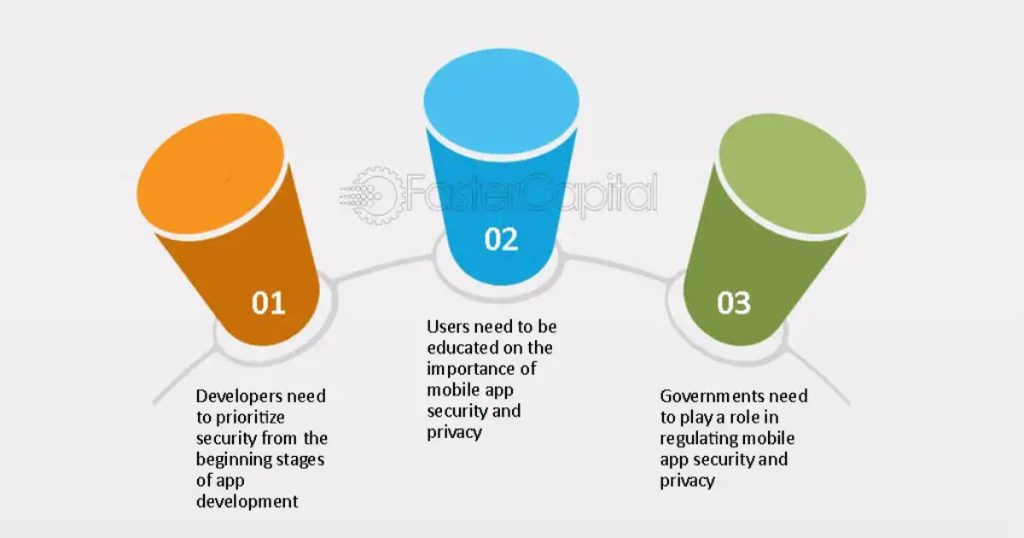In an era dominated by mobile technology, the security of mobile applications is of utmost importance. From personal data to sensitive transactions, mobile apps handle a multitude of user information, making them attractive targets for cyber threats. To mitigate risks and fortify the security of your mobile app, adopting best practices is essential.
This comprehensive guide outlines key strategies and measures for developers and businesses to enhance the security of their mobile applications.
Understanding the Mobile App Threat Landscape

Before diving into best practices, it’s crucial to comprehend the threat landscape surrounding mobile applications. Common risks include data breaches, unauthorized access, and the exploitation of vulnerabilities in app code. By understanding potential threats, developers can implement targeted security measures to safeguard against specific risks.
Best Practices for Mobile App Security

1. Data Encryption and Protection:
- Secure Transmission: Utilize strong encryption protocols to protect data during transmission. This prevents unauthorized interception of sensitive information.
- Secure Storage: Employ robust encryption algorithms to safeguard data stored on the device, making it challenging for malicious actors to access stored information.
2. Authentication and Authorization:
- Multi-Factor Authentication (MFA): Implement MFA to add an extra layer of security beyond traditional passwords. Biometric authentication, such as fingerprints or facial recognition, enhances user account protection.
- Role-Based Access Control (RBAC): Assign specific permissions based on user roles to limit access only to necessary functionalities.
3. Regular Security Audits and Testing:
- Routine Audits: Conduct regular security audits to identify vulnerabilities. This involves analyzing the app’s code, backend systems, and third-party dependencies for potential security risks.
- Penetration Testing: Simulate real-world attacks through penetration testing to identify and address weaknesses in the app’s defenses.
4. App Permissions and Least Privilege Principle:
- Limited Permissions: Request only the essential permissions required for the app’s functionalities. Avoid unnecessary access requests to enhance user trust and security.
- Least Privilege Principle: Apply the principle of least privilege to grant the minimum level of access necessary for users or processes to perform their functions.
5. Secure Backend Systems:
- Secure Communication Channels: Ensure secure communication between the mobile app and backend servers. Implement secure protocols, such as HTTPS, to protect data in transit.
- Robust Authentication: Employ strong authentication mechanisms for interactions between the mobile app and backend systems. This includes secure server-side authentication to prevent unauthorized access.
6. Code Review and Update Dependencies:
- Thorough Code Reviews: Regularly review and analyze the app’s code to identify and address security vulnerabilities. Peer reviews contribute to a comprehensive assessment of potential risks.
- Dependency Updates: Keep third-party libraries and dependencies up-to-date. Monitor for security patches and updates to address known vulnerabilities in external components.
7. User Education and Awareness:
- Informed Users: Educate users about security best practices, such as creating strong passwords and being cautious about granting permissions. Informed users play an active role in maintaining the security of their accounts.
Evolving Security Measures

The mobile app security landscape is dynamic, with new threats emerging regularly. Staying informed about current security trends and evolving attack vectors is imperative. Continuous monitoring and adaptation of security measures ensure that mobile applications remain resilient against evolving cyber threats.
Here are the top mobile app security tools:
- NowSecure: Automated mobile app security testing for both Android and iOS platforms, identifying vulnerabilities and providing insights into potential threats.
- Veracode: Comprehensive application security platform offering static and dynamic analysis, software composition analysis, and manual penetration testing for mobile apps.
- Checkmarx: Focuses on static application security testing (SAST) for mobile apps, scanning source code to identify vulnerabilities early in the development process.
Final Thoughts
In conclusion, the security of mobile applications demands a proactive and multifaceted approach. By incorporating these best practices into the development lifecycle and staying vigilant in the face of emerging threats, developers and businesses can build mobile apps that not only deliver a seamless user experience but also stand resilient against potential security risks.
Prioritizing mobile app security is not just a technical requirement; it’s a commitment to safeguarding user trust and upholding the integrity of digital interactions in an interconnected world.
If you are seeking a mobile app development agency, please reach out to us to schedule a consultation.






